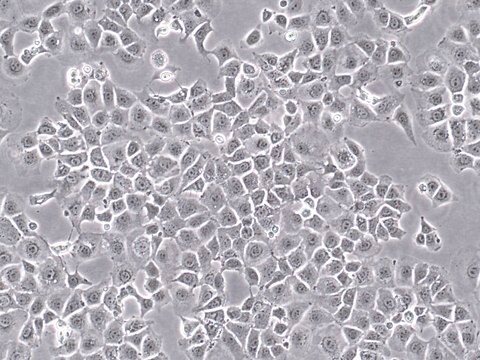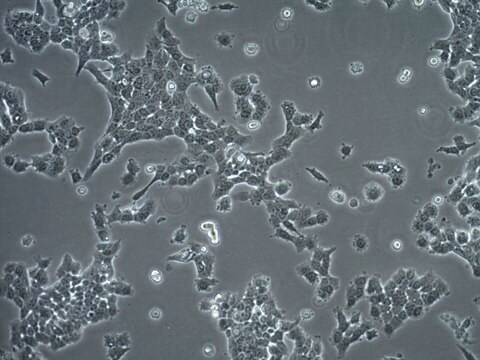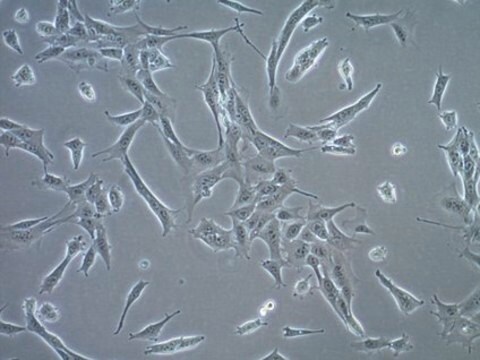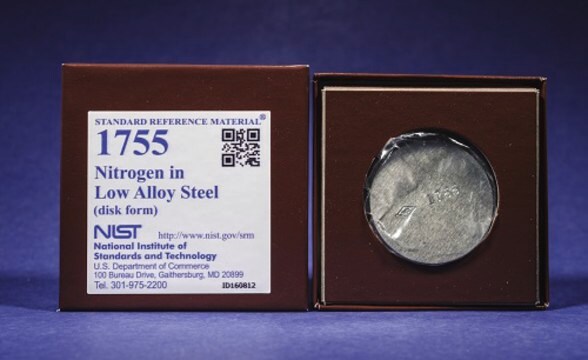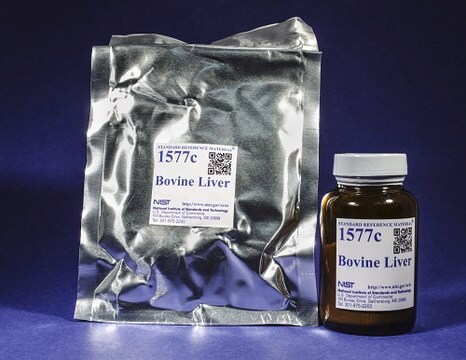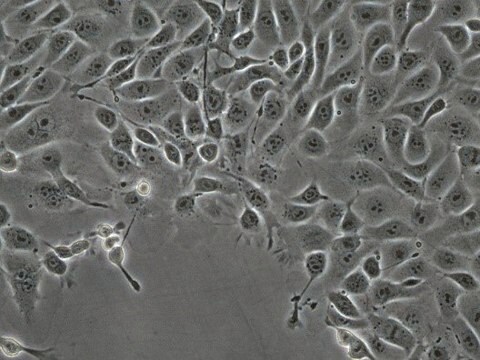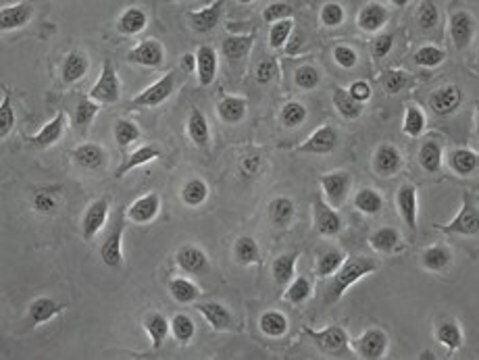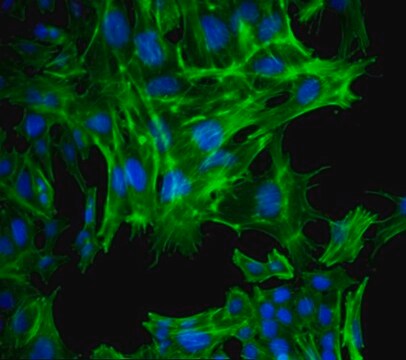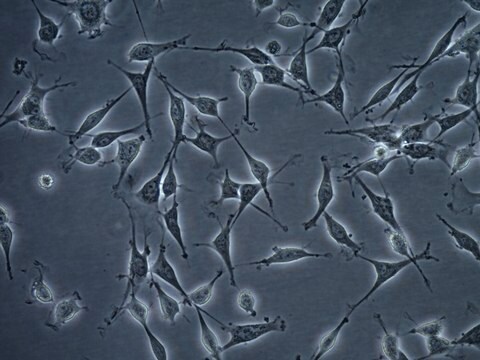SCC416
Py2T Mouse Mammary Tumor Cell Line
Synonym(e):
Py2T cell line;Mouse mammary tumor cell line;Py2T Murine breast cancer cells
About This Item
Empfohlene Produkte
Biologische Quelle
mouse
Qualitätsniveau
Verpackung
vial of ≥1X10⁶ cells
Hersteller/Markenname
Millipore
Wachstumsmodus
N/A
Beschreibung
(≥1x106 viable Py2T Mouse Mammary Tumor Cells: (Catalog No. SCC416). Store in liquid nitrogen. )
Methode(n)
cell based assay: suitable
cell culture | mammalian: suitable
Versandbedingung
liquid nitrogen
Lagertemp.
−196°C
Anwendung
- Each vial contains > 1X106 viable cells.
- Cells are tested negative for infectious diseases by a Mouse Essential CLEAR Panel by Charles River Animal Diagnostic Services.
- Cells are verified to be of mouse origin and negative for interspecies contamination from human, rat, Chinese hamster, Golden Syrian hamster, and nonhuman primate (NHP) as assessed by a Contamination Clear panel by Charles River Animal Diagnostic Services
- Cells are negative for mycoplasma contamination.
These cells have a uniform cobblestone-like morphology, typical of differentiated epithelial cells, and express estrogen receptor (ER), and both basal (CK14) and luminal (CK8/18) markers. When these cells are implanted orthotopically in syngeneic FVB/N mice, they form non-metastatic invasive tumors with low or absent E-cadherin.
Epithelial-mesenchymal transition (EMT) is a process involved in the initiation of the invasion-metastasis cascade of cancer cells. 90% of breast cancer-related deaths are ascribed to systemic dissemination of cancer cells leading to their metastatic outgrowth in distant organs.
Source
The Py2T cell line was derived from a mammary tumor of a MMTV-PyMT transgenic mouse.
References
1.PLoS One 2012; 7(11):e48651. PMID: 23144919.
2.Oncogene 2015; 34(32):4190-4198. PMID: 25362852.
3.Sci Rep 2018; 8(1):12123. PMID: 30108334.
4.Ayse NK. University of Basel 2017; Dissertation. https://edoc.unibas.ch/59030/1/Ph.D.%20Dissertation.pdf
Leistungsmerkmale und Vorteile
Lagerung und Haltbarkeit
Sonstige Hinweise
Haftungsausschluss
Lagerklassenschlüssel
10 - Combustible liquids
WGK
WGK 3
Analysenzertifikate (COA)
Suchen Sie nach Analysenzertifikate (COA), indem Sie die Lot-/Chargennummer des Produkts eingeben. Lot- und Chargennummern sind auf dem Produktetikett hinter den Wörtern ‘Lot’ oder ‘Batch’ (Lot oder Charge) zu finden.
Besitzen Sie dieses Produkt bereits?
In der Dokumentenbibliothek finden Sie die Dokumentation zu den Produkten, die Sie kürzlich erworben haben.
Unser Team von Wissenschaftlern verfügt über Erfahrung in allen Forschungsbereichen einschließlich Life Science, Materialwissenschaften, chemischer Synthese, Chromatographie, Analytik und vielen mehr..
Setzen Sie sich mit dem technischen Dienst in Verbindung.